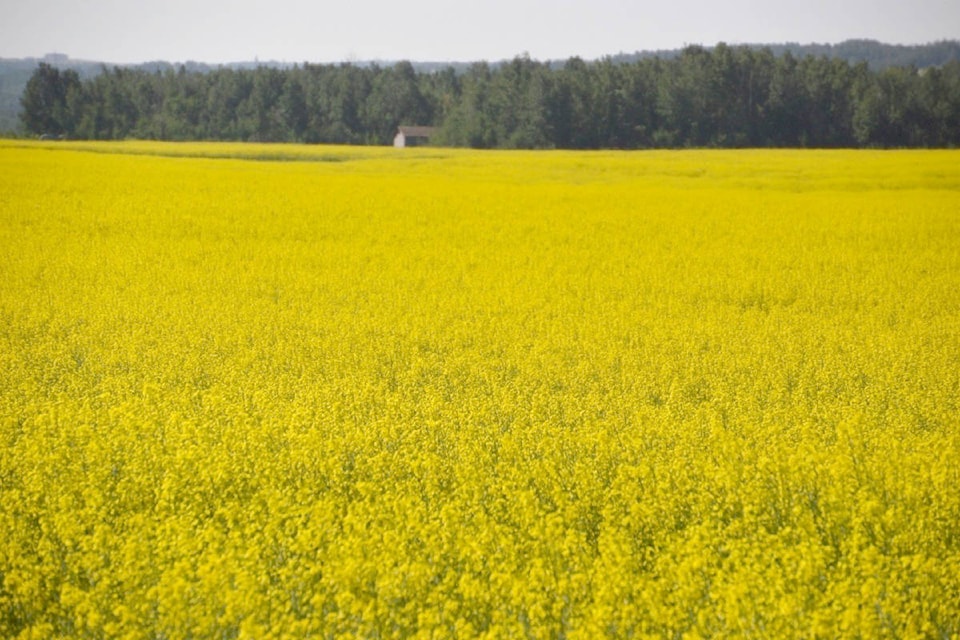By Angela Brackenreed
On-farm storage capacity allows farmers to sit on more of their grain and wait for better market prices, but this advantage falls apart if the crop spoils in the meantime.
The best thing is to check all bins, especially with fluctuating temperatures this time of year. Transferring canola from one bin to another on a cool day is the best way to stop heating. When transferring, move at least one third of the canola out of a bin. If green counts, moisture, weeds or dockage are high, transferring the whole bin may be the safest strategy. Feel for heat and sniff for a rancid, sweet or burnt smell as the canola comes out of the bin.
Storage risks for canola include moisture, dockage and green seed, which are common this year, as well as warm grain, sprouted seeds and mouldy seed.
Moisture and mould often work together to trigger heating. Clumping is a sign of mould growth. Storage research found that canola seeds at 25°C and 10.6% moisture clumped together after 11 days and visible mould colonies appeared after 21 days. Note that this research was done in small tubes with uniform conditions. With variable conditions in most bins, clumping may occur more quickly in an on-farm situation.
Over time, the risk of spoilage due to these factors will increase. Fluctuating outside temperatures don’t help. Warm and sunny ambient conditions that warm up the walls of the bin can encourage moisture migration inside the bin – concentrating moisture at the bottom of the central core if the grain is otherwise cold. When outside air is colder than the grain inside the bin, air currents inside the bin can concentrate moisture at the top of the central core. In either case, this concentration of moisture can create a start point for heating. Moisture inside the bin can come from the grain itself or from dockage, like pod and stem pieces, that may have higher moisture than the grain.
Three tips for better bin checks
One, temperature cables can identify a hot spot before it becomes a problem, but grain is a fairly good insulator. A hot spot that starts in the midpoint between two cables could be quite advanced before it shows up on the temperature cable, which is another rea-son to move quickly. Any unexpected rise in temperature should be a clear signal that action is required. Once an area starts to warm up, the reaction has started and the canola will probably just get hotter and hotter until spoilage starts.
Two, moisture testers are not designed to work on cold grain. To avoid moisture tester error, put the sample in a sealed container (to allow the sample to come to equilibrium), bring it inside and wait six to 12 hours before testing.
Three, cold canola may not be as safe as you think. Freezing tough (10 to 12.5% mois-ture) or damp (over 12.5%) canola by running cold air through the bin can be a short-term storage solution for canola that couldn’t get dried before winter, but check that canola regularly. In December, the Canola Council’s Clint Jurke discovered that a 3,000-bushel bin of 15% moisture canola was starting to heat, even though the bin was cooled to -5°C.
The best solution for high moisture grain in storage this winter is aeration to achieve uni-formly cold and frozen conditions, and conditioning in the spring once temperatures al-low. Ultimate “safety” should never be assumed.
–Angela Brackenreed is an agronomy specialist with the Canola Council of Canada. This canola management tip is brought to you by canolawatch.org, a collaboration of the Canola Council, SaskCanola, Alberta Canola and Manitoba Canola Growers
